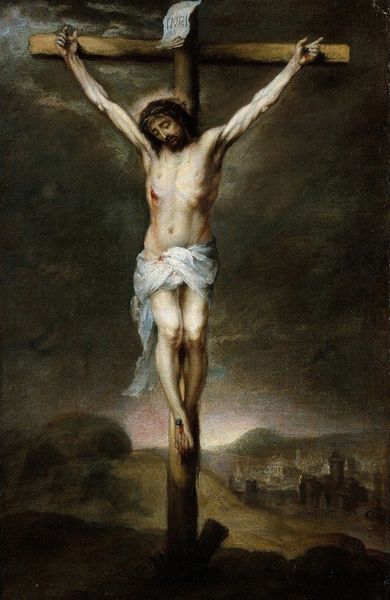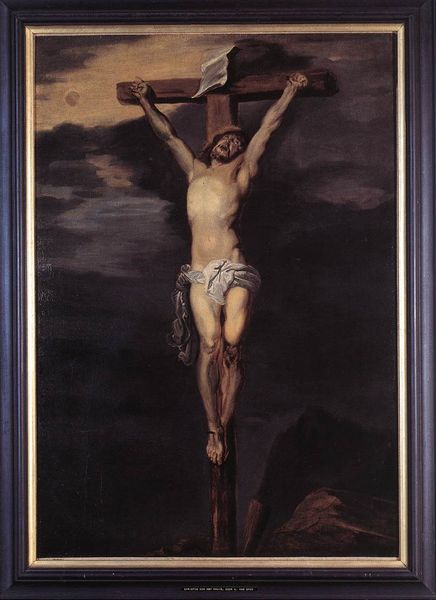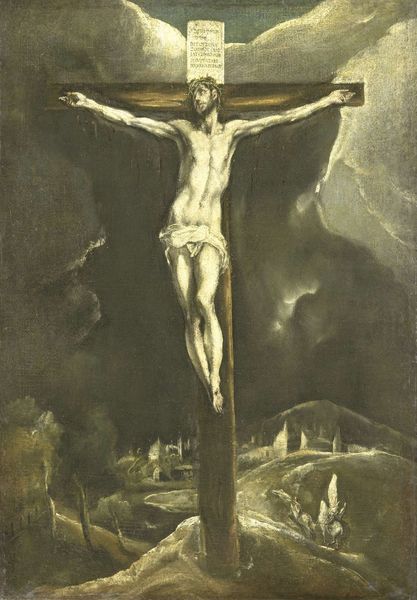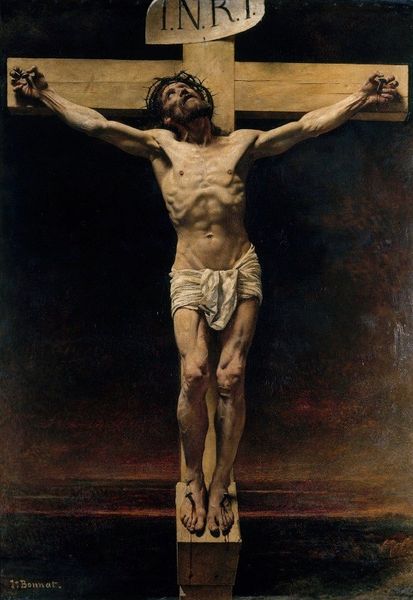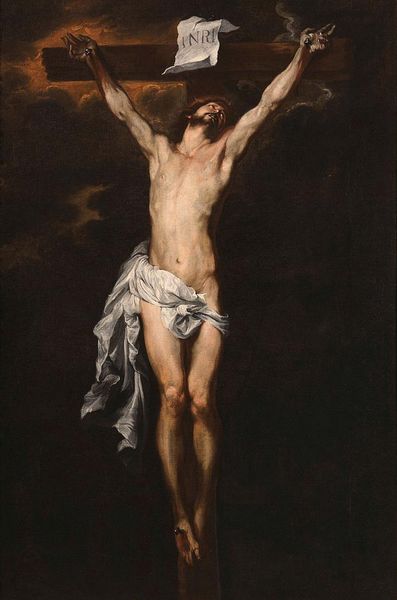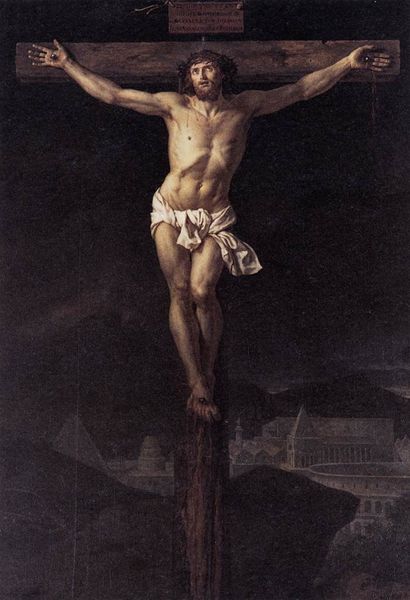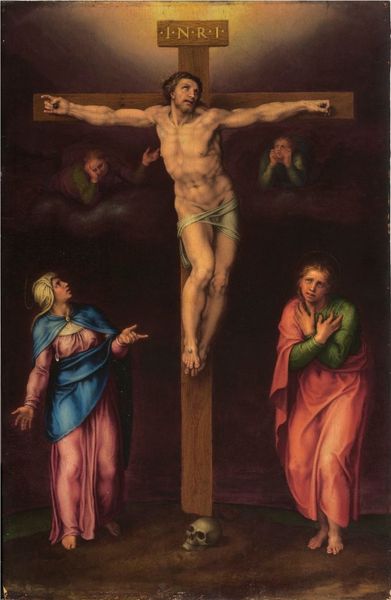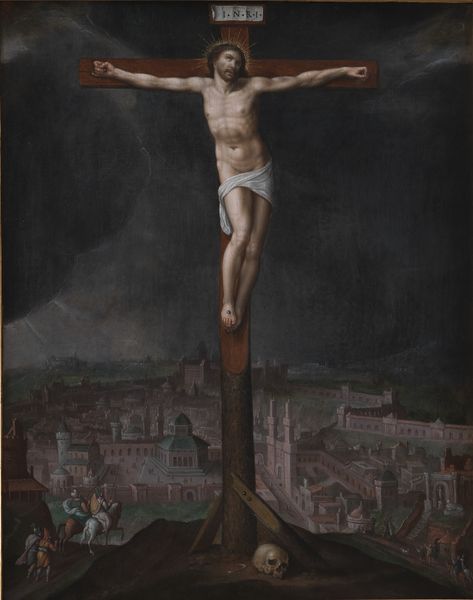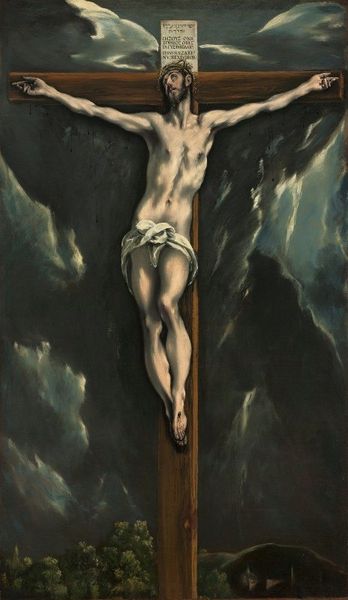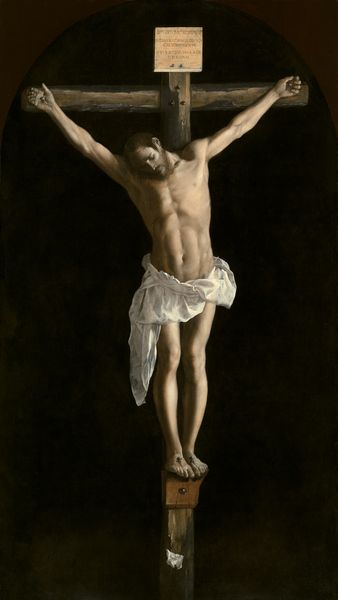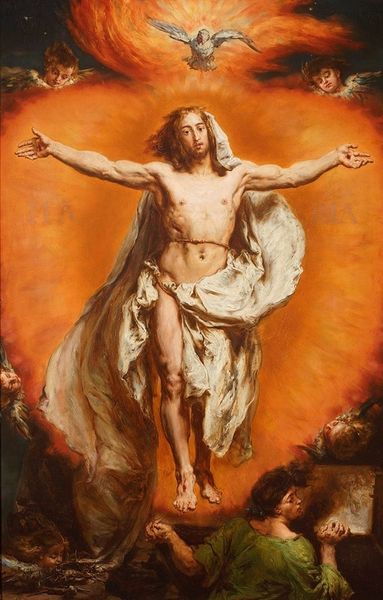
painting, oil-paint
#
allegory
#
baroque
#
painting
#
oil-paint
#
landscape
#
figuration
#
oil painting
#
jesus-christ
#
chiaroscuro
#
christianity
#
crucifixion
#
history-painting
#
realism
#
christ
Copyright: Public domain
Bartolomé Estebán Murillo, a key figure of the Spanish Baroque, painted this oil on canvas, Christ on the Cross. The image of Christ’s crucifixion has powerful meaning, particularly in 17th-century Seville, which experienced both great wealth from overseas trade and devastating epidemics. Murillo’s devotional paintings reinforced the values of the Catholic Church, a key institution, but they also responded to the period’s social realities. Look at how the landscape seems to open up behind Christ. The city in the distance might be Jerusalem, but it might also reference the new urbanism and colonial enterprises of Murillo's time. Note also the skull at the base of the cross, a memento mori. The Catholic Church used images like these to remind viewers of death's inevitability and the need for faith and repentance. Murillo was not only a painter but also the founder of an academy of art in Seville. In this way, he helped to shape the institution of art in Spain. To understand this work, we can look at religious writings, the history of Seville, and also the archives of the art academy. This will help us to understand the complex interaction of art, religion, and society.
Comments
No comments
Be the first to comment and join the conversation on the ultimate creative platform.
